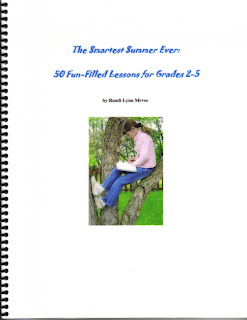That summer, I prepared for our first “class.” I set out the materials for the project on the kitchen table the night before to create curiosity and anticipation. Though I felt prepared for teaching, I was unprepared for my daughter’s reaction. She wanted to be the teacher, too! Our “class” consisted of her dolls, arranged shoulder to shoulder on the couch in the living room. In our arrangement I presented the lesson, and afterward, she quizzed “the students.” She helped demonstrate the art or science projects for the class.
These summer classes were so successful that I continued to write more lessons and to invent more activities for five more years. The result became my book The Smartest Summer Ever: 50 Fun-filled Lessons for Grades 2 - 5.
Inside my book, you'll find 100 colorful pages of kid-tested and teacher-approved lessons and activities for learning English, math, history, art, and more, which will provide opportunities to enrich your child's summer. The book is a great teaching tool, whether you offer lessons on a daily basis or on the weekends. Many activities integrate more than one skill like writing practice and spelling words. The projects reinforce the theme of the lesson and they're fun, inexpensive, and easy to do. For example, children will:
Inside my book, you'll find 100 colorful pages of kid-tested and teacher-approved lessons and activities for learning English, math, history, art, and more, which will provide opportunities to enrich your child's summer. The book is a great teaching tool, whether you offer lessons on a daily basis or on the weekends. Many activities integrate more than one skill like writing practice and spelling words. The projects reinforce the theme of the lesson and they're fun, inexpensive, and easy to do. For example, children will:
Perform sweet pollination experiments
Cook easy and delicious international foods
Design Pop-Art pictures using cookie cutters
Create and play a colonial board game
Go on a scavenger hunt for verbs
Construct a coral reef diorama
The Smartest Summer Ever is perfect for parents hungry to bridge learning from the school year, to encourage creativity, and to spend time and make memories with their children. For a free lesson plan and activity or to order, please leave a comment.
Cook easy and delicious international foods
Design Pop-Art pictures using cookie cutters
Create and play a colonial board game
Go on a scavenger hunt for verbs
Construct a coral reef diorama
The Smartest Summer Ever is perfect for parents hungry to bridge learning from the school year, to encourage creativity, and to spend time and make memories with their children. For a free lesson plan and activity or to order, please leave a comment.
